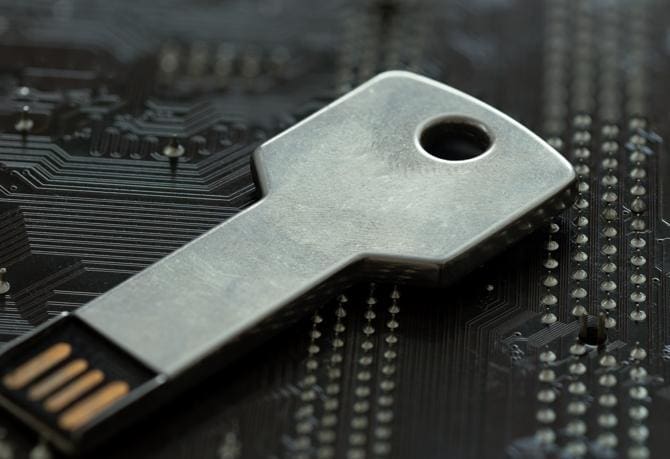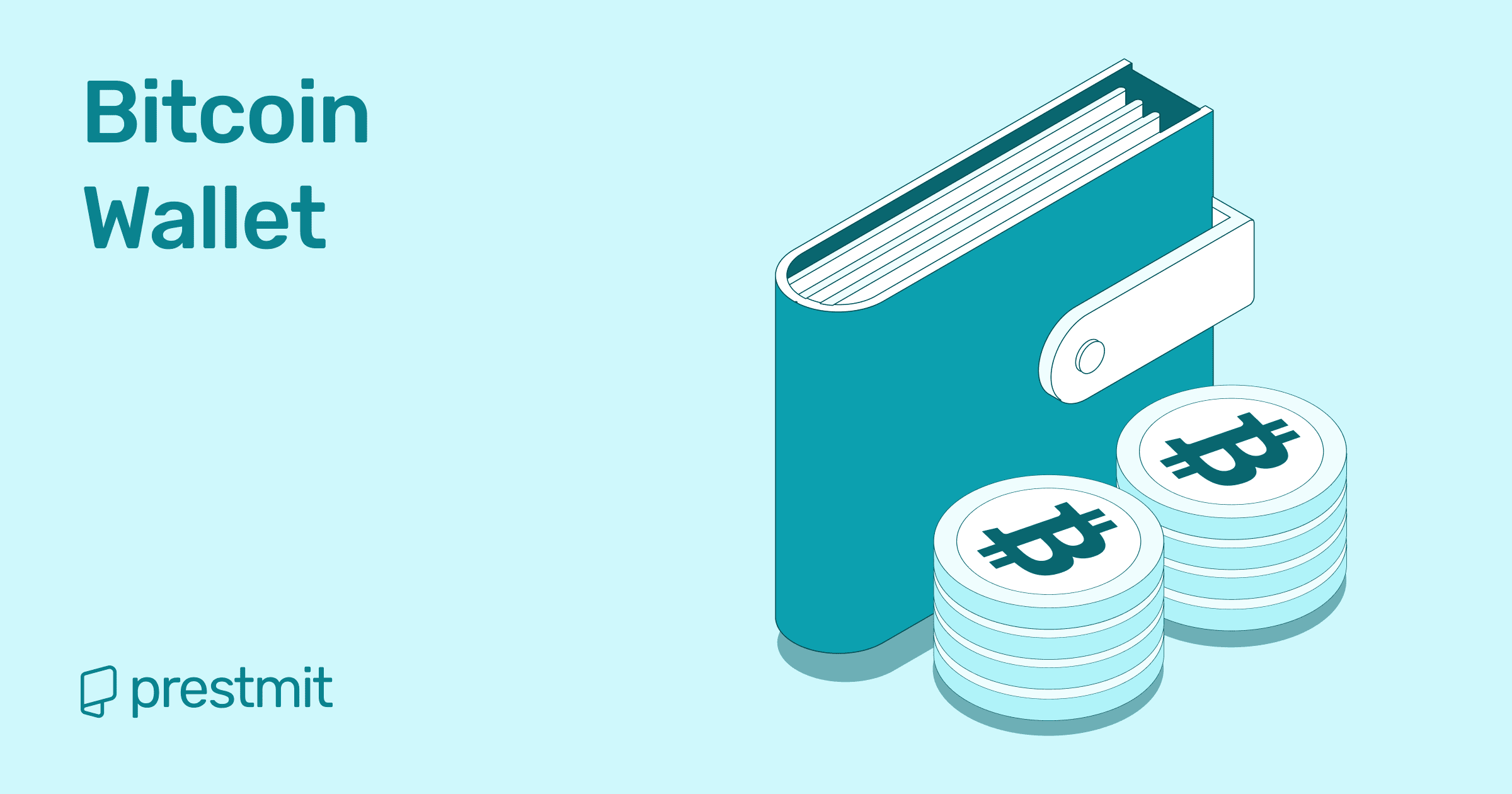Table of Contents
Bitcoin is the most popular cryptocurrency in the world and the world’s first crypto. As a result, it is the first network to support crypto wallets. Bitcoin founder Satoshi Nakamoto owned the first Bitcoin wallet, while his friend Hal Finney owned the second wallet. Nakamoto sent Finney 10 Bitcoins to test run the wallet, and it has become an important aspect of the crypto ecosystem today.
Although Bitcoin wallets have evolved from the first one Satoshi Nakamoto created, they are still just as important in securing your Bitcoins. This article will examine Bitcoin wallets, including the types, how to create one, etc. If you’re new to Bitcoins and unsure of what a Bitcoin wallet is, or you want to learn more about Bitcoin wallets, then this article is for you.
What are Bitcoin Wallets?

Bitcoin wallets are digital tools that allow you to store, send, and receive Bitcoin safely. Your Bitcoin wallet is something like your regular bank account, from which you can store your money, send money, and receive money. However, a Bitcoin wallet uses a different program. It uses software that interacts with the Bitcoin blockchain. This allows users to manage their Bitcoin holdings easily.
When we talk about wallets, it’s easy to compare them to your physical wallet, which holds your physical cash. However, as mentioned earlier, a Bitcoin wallet is more like your bank account than a physical wallet. It stores your private and public keys used to carry out transactions on the Bitcoin blockchain.
However, some Bitcoin wallets can also store other types of cryptocurrencies apart from Bitcoin. There are also different types of Bitcoin wallets, such as software and hardware wallets. These types of Bitcoin wallets come with their advantages and disadvantages. Despite their differences, they all serve the same basic functions for storing your Bitcoin. Below, we’ll be looking at the types of Bitcoin wallets and how to choose the right one.
Types of Bitcoin Wallets
1. Software Wallets
Software wallets are also referred to as hot wallets. These are apps that allow you to manage your Bitcoin anytime and anywhere because they are connected to the internet. Software wallets are like any app on your internet-enabled device, such as phones and laptops.
They are easy to use, but their major disadvantage is that they have inherent vulnerabilities and can be targeted by hackers or malware programmes that steal your Bitcoin.
2. Hardware Wallets
Hardware wallets are widely regarded as the safest of all Bitcoin wallets. These wallets store a user’s private keys offline on a physical device. Unlike the hot wallet, hardware wallets offer protection from malware and hackers. Hardware wallets also store the user’s Bitcoins offline, which is why they are called cold wallets.
3. Custodial wallets
Another type of Bitcoin wallet is the custodial wallet. Unlike the first two discussed above, this type of wallet is usually offered on cryptocurrency exchanges. They are convenient to use and are the go-to wallets of new and experienced Bitcoin traders.
However, the downside to custodial wallets is that the exchange holds the private keys needed to facilitate transactions, unlike other wallets where the users are in full control of their private keys. If you want to use a custodial wallet, you must ensure that it’s an exchange you fully trust and that they have adequate security measures to protect your Bitcoin assets.
4. Non-custodial wallets
Non-custodial wallets allow users to fully control their Bitcoin assets by storing the private key with the user. When opening a non-custodial wallet, you’ll be asked to write down 12 randomly generated words and keep them safe. These words are known as mnemonic phrases, recovery words, or recovery seeds. This phrase is then used to generate the user’s public and private keys, and it also serves as a recovery or backup tool if the user loses access to their device.
How to Create a Software Wallet
Step 1: Choose a software wallet app
There are several software wallet options, so ensure you choose a reliable wallet provider that offers great features and adequate security for your Bitcoin. Research and read user reviews before deciding which wallet provider you should use.
Step 2: Download the wallet app
After choosing your preferred wallet provider, download the app to your phone or computer. This ensures that you can easily access your Bitcoin at any time. Make sure you download the app from the wallet provider’s official website or from the official app store to avoid downloading malicious softwares that can be used to steal your Bitcoin.
Step 3: Create an account
Simply create your account by providing the required basic information, such as your name and email address. Depending on the wallet provider, you might be asked to verify your identity by providing a government-issued ID card.
Step 4: Transfer your Bitcoin
After creating your account, your software wallet is ready to use. All you need to do next is transfer your Bitcoin assets to it, and there are different ways to do this. You can deposit them from a bank account, from a crypto exchange, or even from another software wallet.
How to Create a Hardware Wallet

Step 1: Choose a hardware wallet
Research and compare the different types of hardware wallets available to decide which is best for you. Read user reviews and look for features like security, ease of use, etc.
Step 2: Buy the hardware and install the necessary software
After deciding on the hardware wallet you want, buy it and install the necessary softwares. The software installation process usually varies based on the type of hardware wallet. However, most hardware wallets have a setup wizard that you can use to guide the installation process.
You can download and install the wallet software on your phone or computer, and after the installation, connect your hardware to your phone or computer using Bluetooth or a USB cable. Always follow the manufacturer’s instructions carefully to ensure your wallet is set up correctly.
Step 3: Transfer your Bitcoin
You can start transferring your Bitcoin once you’ve finished setting up your wallet and installing the necessary software. However, you’ll have to link your hardware wallet to an exchange or a brokerage account before transferring to your wallet. All the Bitcoins sent to your hardware wallets are stored offline for extra safety and security.
Frequently Asked Questions (FAQs) About Bitcoin Wallets
How many types of BTC wallets are there?
There are four main types of Bitcoin wallets, namely: Software wallets, Hardware wallets, Custodial wallets, and non-custodial wallets.
How do Bitcoin wallets work?
Bitcoin wallets work by storing special codes called private keys. These keys allow you to send and receive Bitcoin. The wallet doesn’t hold the coins but controls the coins connected to your wallet address on the Bitcoin network.
How do I use a Bitcoin wallet?
To use a Bitcoin wallet, first get one by downloading a software wallet app or buying a hardware wallet, then create an account and set it up correctly. Then, you can start receiving Bitcoin by sharing your wallet address. You can also send Bitcoin by entering the receiver’s address and the amount you want to send.
Conclusion
Bitcoin wallets are important for storing your Bitcoin assets. However, ensure you research which Bitcoin wallet is the best for you, especially if you are new to Bitcoin. There are many types of wallets, and you should only choose the ones that offer your desired features and adequate security to protect your assets. Once you’ve finished setting up your wallet, you’re ready to start sending and receiving Bitcoin without stress
Last updated on August 5, 2025

